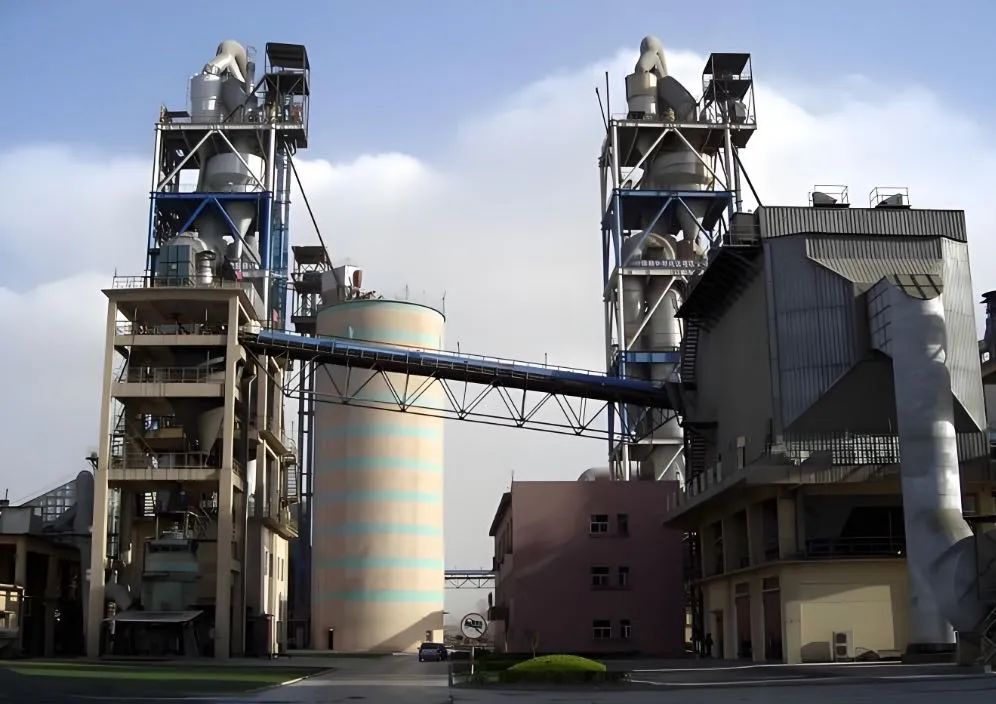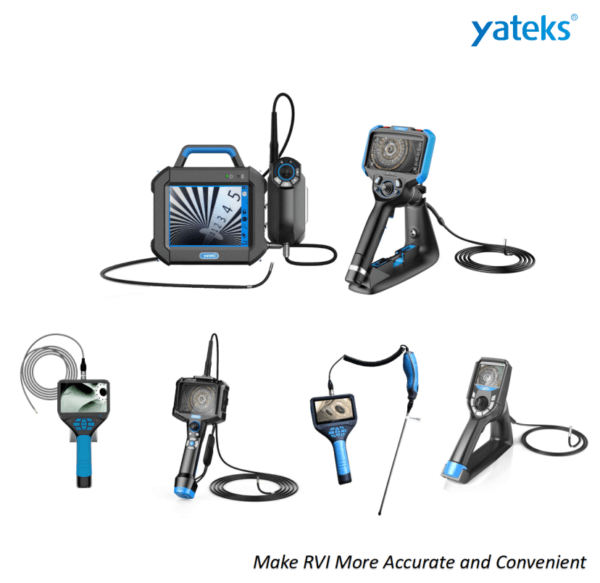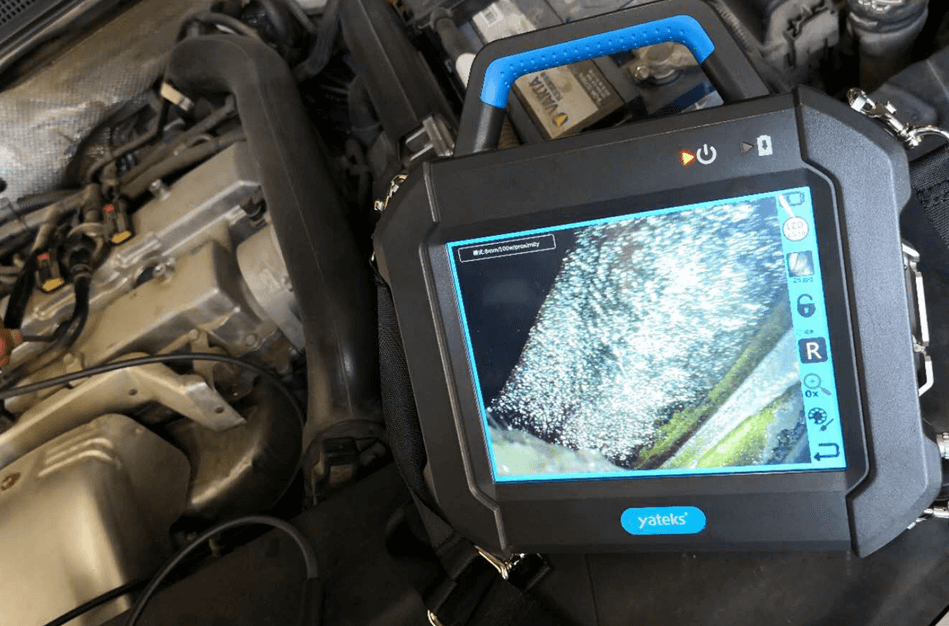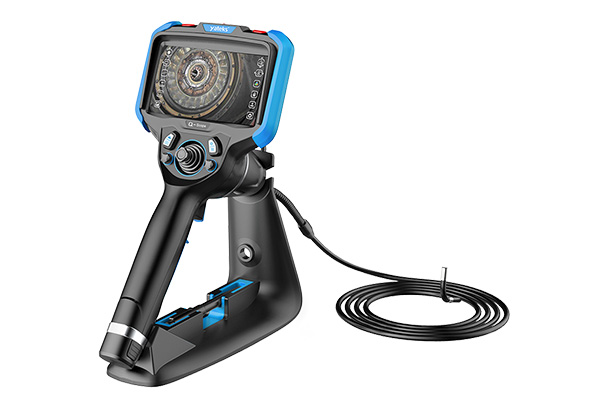1 The structure and principle of industrial endoscopes
Industrial endoscope is a non-destructive testing equipment frequently used in the field of industrial manufacturing and maintenance. It can clearly observe the condition of the inside of the equipment or the inner surface of the parts without disassembling or destroying the equipment. Such as wear, cracks, corrosion, attachments and other abnormal conditions. It has the advantages of high inspection efficiency, simple operation, and easy observation of results. It is an indispensable instrument for equipment maintenance and repair in industrial enterprises.
The structure of an industrial endoscope generally consists of a shooting device, a rotating device, a video probe insertion tube, and a control observation system;
2 Application of industrial endoscope in the maintenance of oil refinery
2.1 The application of industrial endoscopes in the inspection of special equipment in oil refineries
The regular inspection of pressure vessels generally requires macro inspection, wall thickness measurement, surface defect inspection, buried defect inspection, material analysis, strength check, safety accessory inspection, pressure test, leak test, etc. The macro inspection also includes structural inspection, geometric size inspection, appearance inspection, and so on. The appearance inspection generally includes the corrosion of the inner and outer surfaces of the container, the main pressure components and weld cracks, leakage, bulging, deformation, mechanical damage, blockage of the discharge device, corrosion, deposits, damage to the insulation layer or the lining layer Wait for inspection. The macro inspection is mainly based on the visual method; however, the pressure vessel may be restricted by the diameter, volume, and internals of the pressure vessel during the inspection process, and the operator cannot directly enter the interior of the vessel. Surface defect detection. In this case, an endoscope can be used to inspect the inside of the container. Although near-surface defects cannot be detected through endoscopic inspection, when magnetic flaw detection and penetrant inspection are not possible, endoscopic inspection is the most appropriate alternative inspection method. Especially the uniform corrosion, local corrosion, and the accumulation of corrosion products on the inner wall of the container can be observed with an industrial endoscope.
2.2 The application of industrial endoscopes in the maintenance of heat exchange tubes of heat exchangers
Heat exchangers and condensers are common and indispensable container types in the production units of oil refineries. The shell side of the heat exchanger and condenser generally has a small probability of cracking and leakage, but the heat exchange tube bundle of the tube side often suffers from corrosion, leakage, and cracking due to the small tube diameter and thin tube wall. The conventional method for leaking heat exchange tube bundles is to flush, suppress, and plug leaks. This solution has strong operability and simple technology, but it cannot effectively grasp the corrosion trend of the heat exchange tube bundle and the distribution of the corrosion position in the axial and circumferential directions, and cannot prevent the slightest failure. In this way, after the heat exchange tube bundle is reassembled and used, it is easy to cause secondary leakage, bring hidden dangers to production, and cause an emergency shutdown. After the introduction of industrial endoscopes to inspect the heat exchange tube, the corrosion, cracking, and fouling of the inner wall of the heat exchange tube can be effectively observed. Together with the eddy current test, the wall thickness, partial cracks, and damage of the heat exchange tube bundle can be detected. The corrosion and thinning trend of the entire tube bundle are revealed, to provide an accurate basis for the overhaul and maintenance of the entire heat exchanger.
2.3 Industrial endoscopes in pressure pipes and other space-restricted applications
Generally speaking, oil refineries need to conduct a large-scale overhaul of most of their production equipment in about three years. During the purging process of maintenance and repair, it is easy to happen that some wastes are blocked to the elbows and reducers of the pipeline, and this situation is also prone to occur in some moving equipment and connected pipelines. Generally, operators cannot observe these positions directly; and once blockage occurs, the operation of the device may be unstable or even some equipment may stop. Observing the suspected part through the endoscope can easily determine whether the blockage or the fluctuation of production parameters caused by other reasons can be easily judged, and the hidden danger can be eliminated in a timely and effective manner.
3 Advantages of industrial endoscopes
Industrial endoscopes can observe positions that the operator cannot directly observe at close range. The instrument itself is easy to operate and does not require a lot of consumables. It can also be equipped with a corresponding length of fiber optic wire according to the requirements of use; generally, it can meet the needs of the site with a wire of about 10 meters. The endoscope itself has the function of adjusting the direction of the video probe and the function of taking pictures and recording, which can easily find a suitable observation position and record it. It can be said that industrial endoscopes are indispensable inspection equipment in the production and maintenance of oil refineries.





